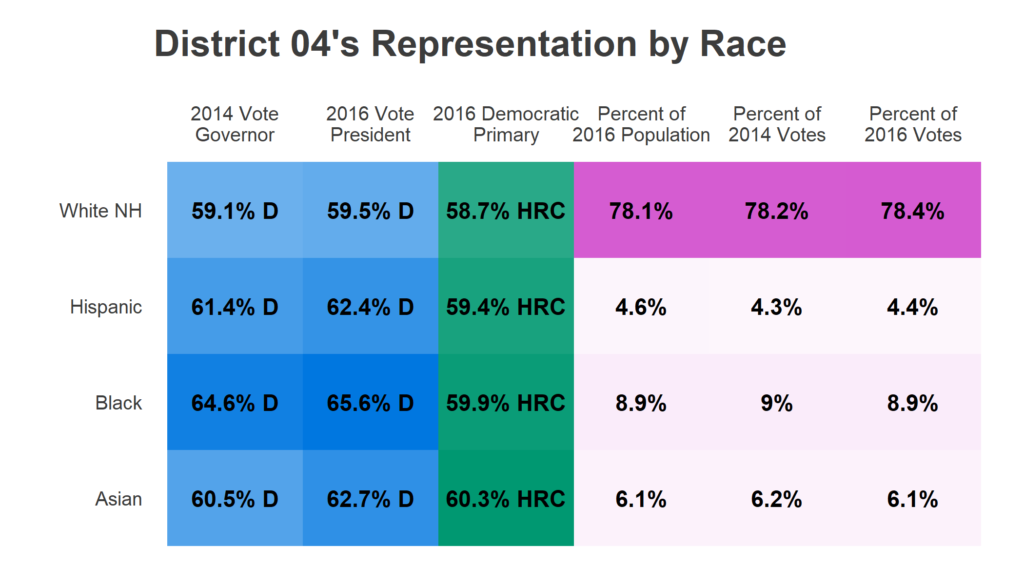I’m profiling each of the State Supreme Court’s new Congressional Districts in the Philadelphia area, looking at their voting behavior and their demographics. Today, the new District 04.
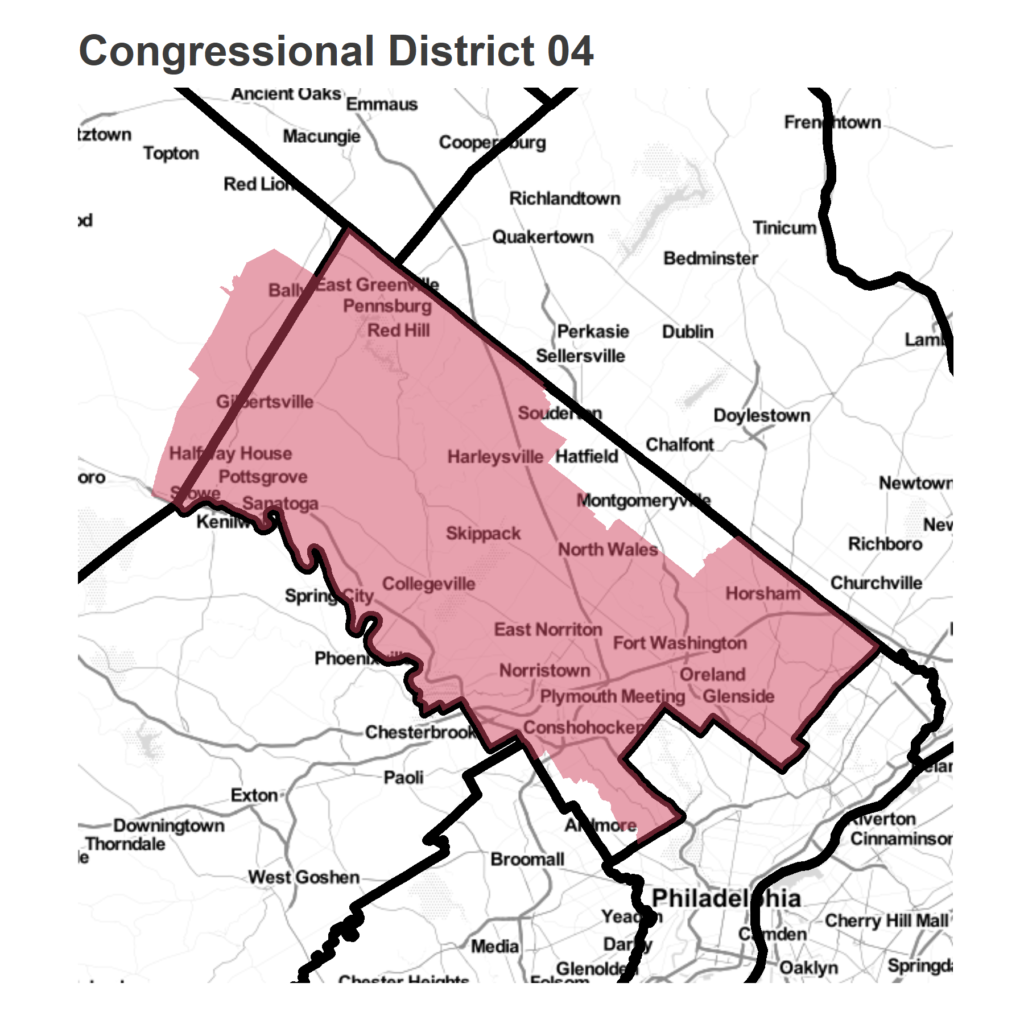
District 04 covers Montgomery county, in Philadelphia’s suburbs. This county had been among the most gerrymandered in the state, and saw the biggest changes under the Supreme Court’s map. It’s a politically diverse county, and chopping it up provided a huge boon to the Republicans. It’s a swing-y county, and gets national attention as a pivotal suburb that seems to be trending Democratic.
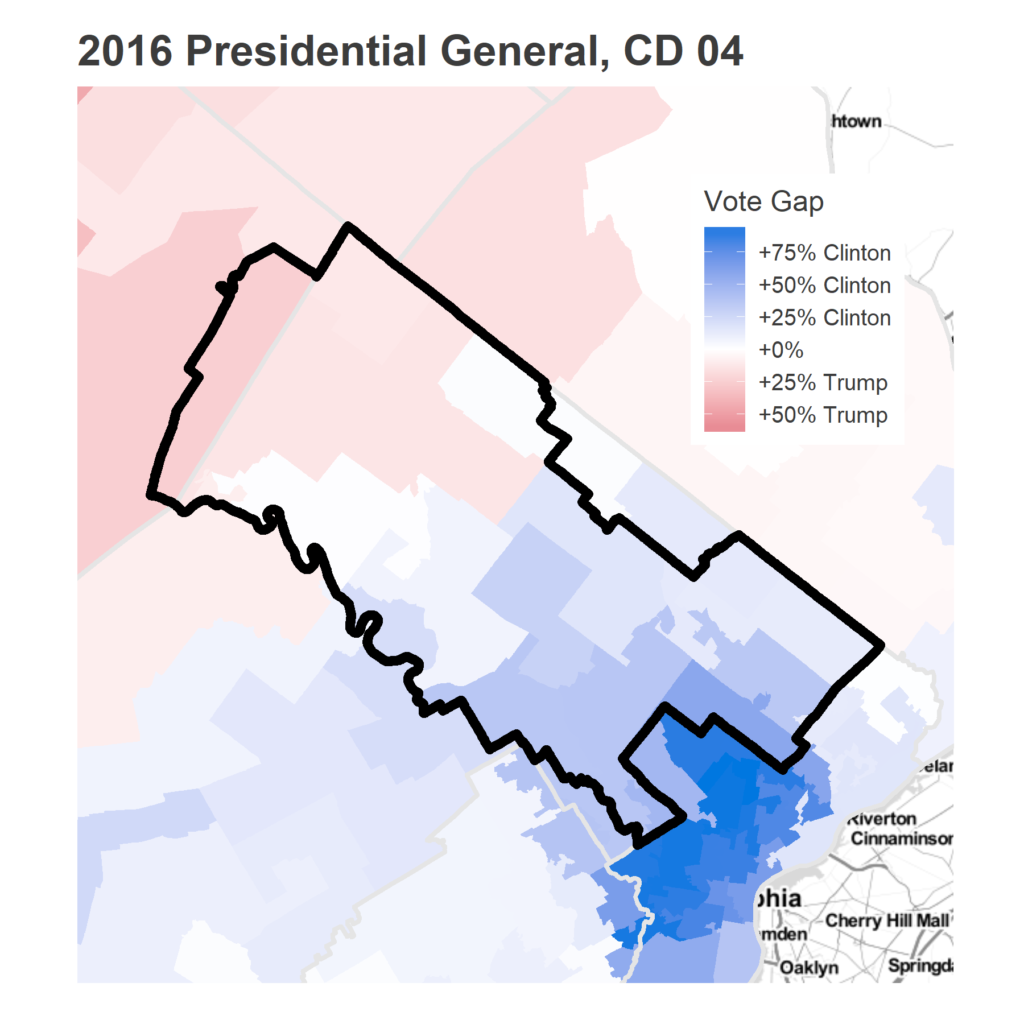
The county combines Democratic neighborhoods in the southeast with Republican neighborhoods in the northwest. However, that doesn’t end up being the relevant distinction to make. The northwest neighborhoods are sparsely populated, and represent very few votes. Instead, the most important distinction is between the heavily Democratic suburbs just outside of Philadelphia–Elkins Park, Glenside, Abington–and the marginally Democratic suburbs in the center. The GOP strategy had been to waste the votes of the former by lumping them in with all-Democrat Philadelphia, while distributing the latter with Republican districts to create safe-but-not-too-safe Republican districts.
Here’s how the county used to be divided. It includes Goofy’s head of the famed former District 7.
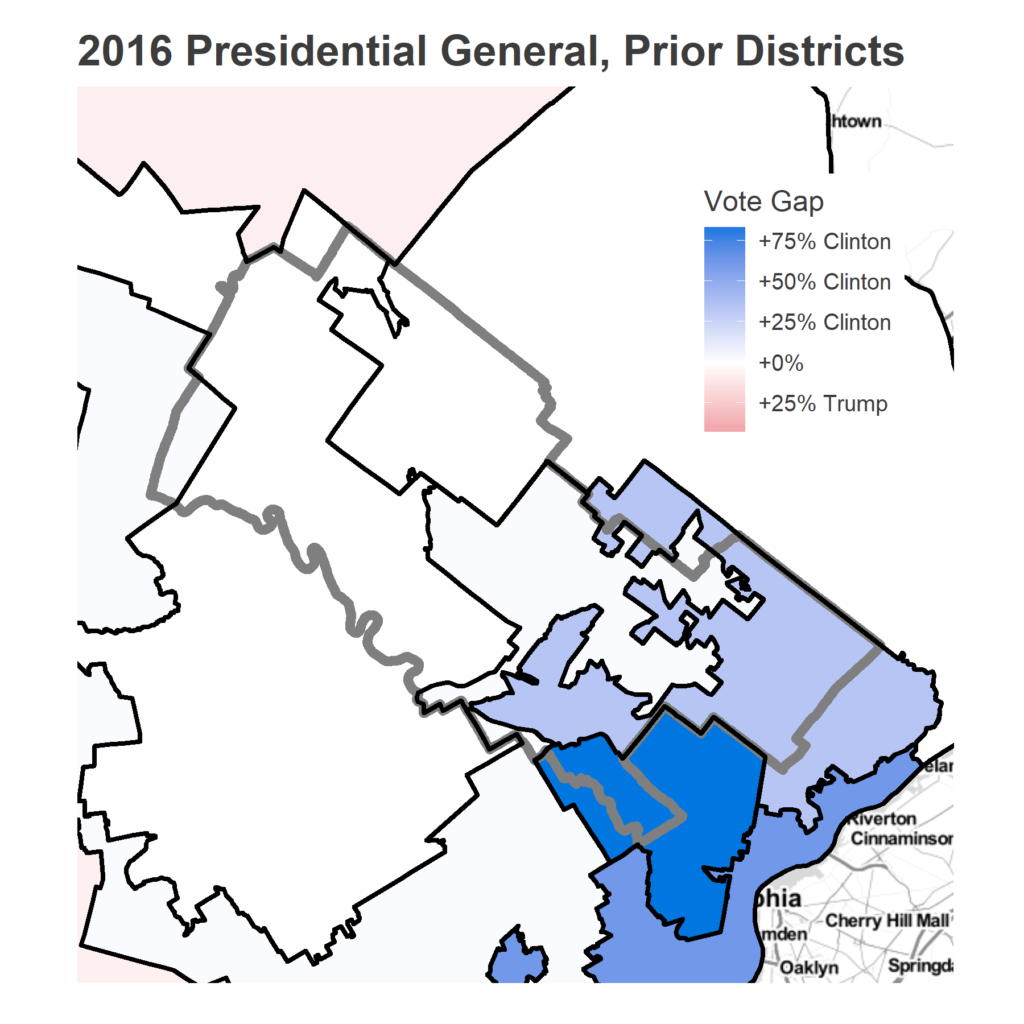
The new district is reliably Democratic.
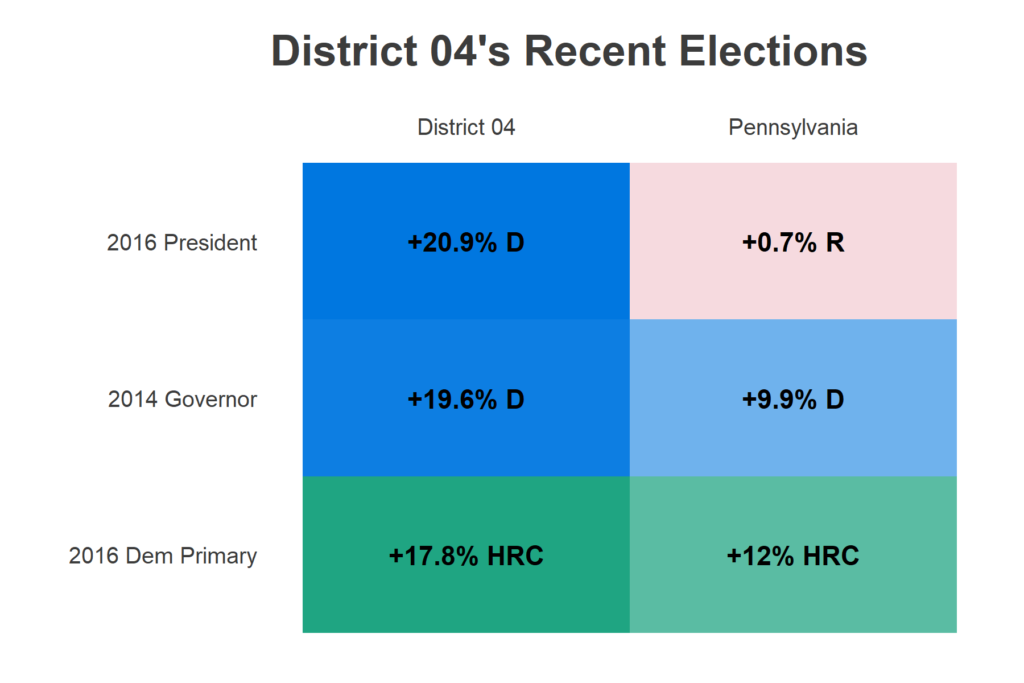
The county is predominately White and higher income. The racial exception is Norristown, and the wealth exception is the more rural area in the northwest.
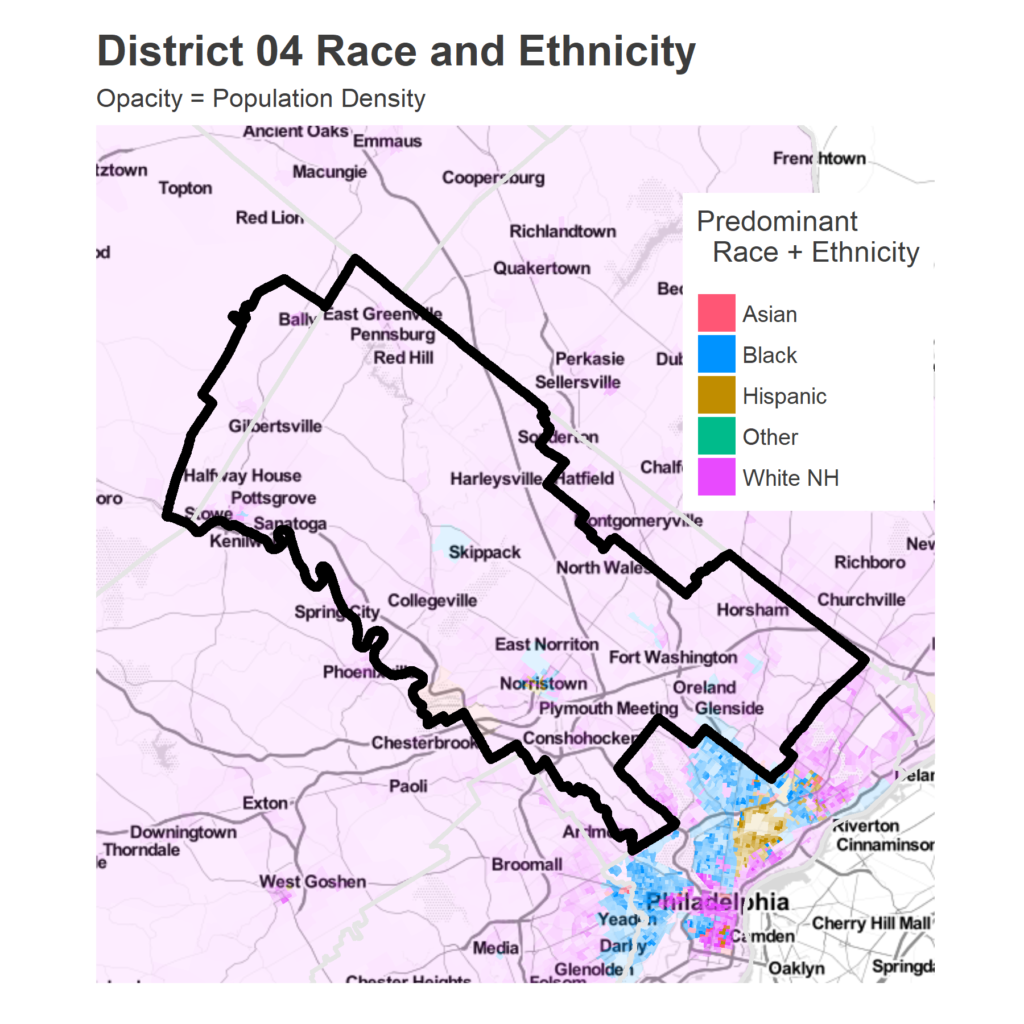
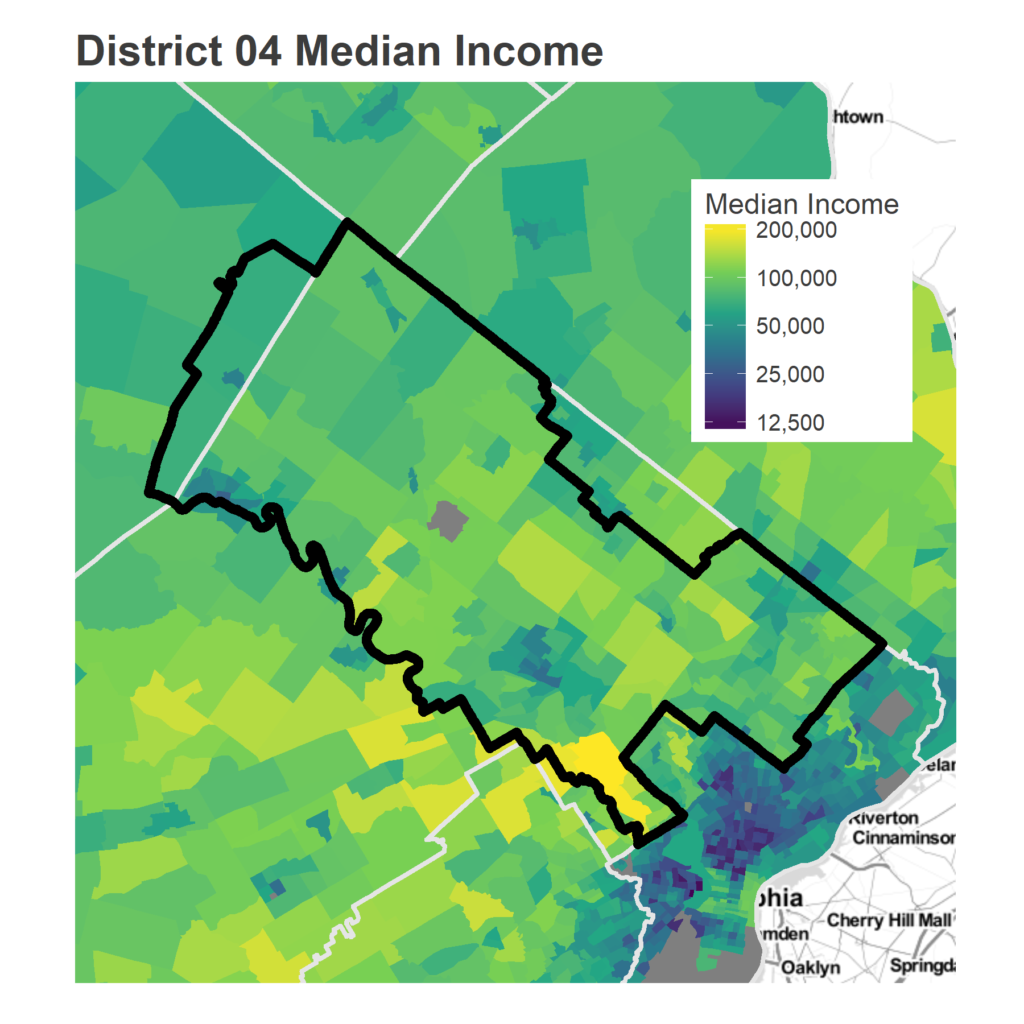
Turnout in 2016 came disproportionately from the inner suburbs. That’s where the population is, but also has the highest turnout per resident.
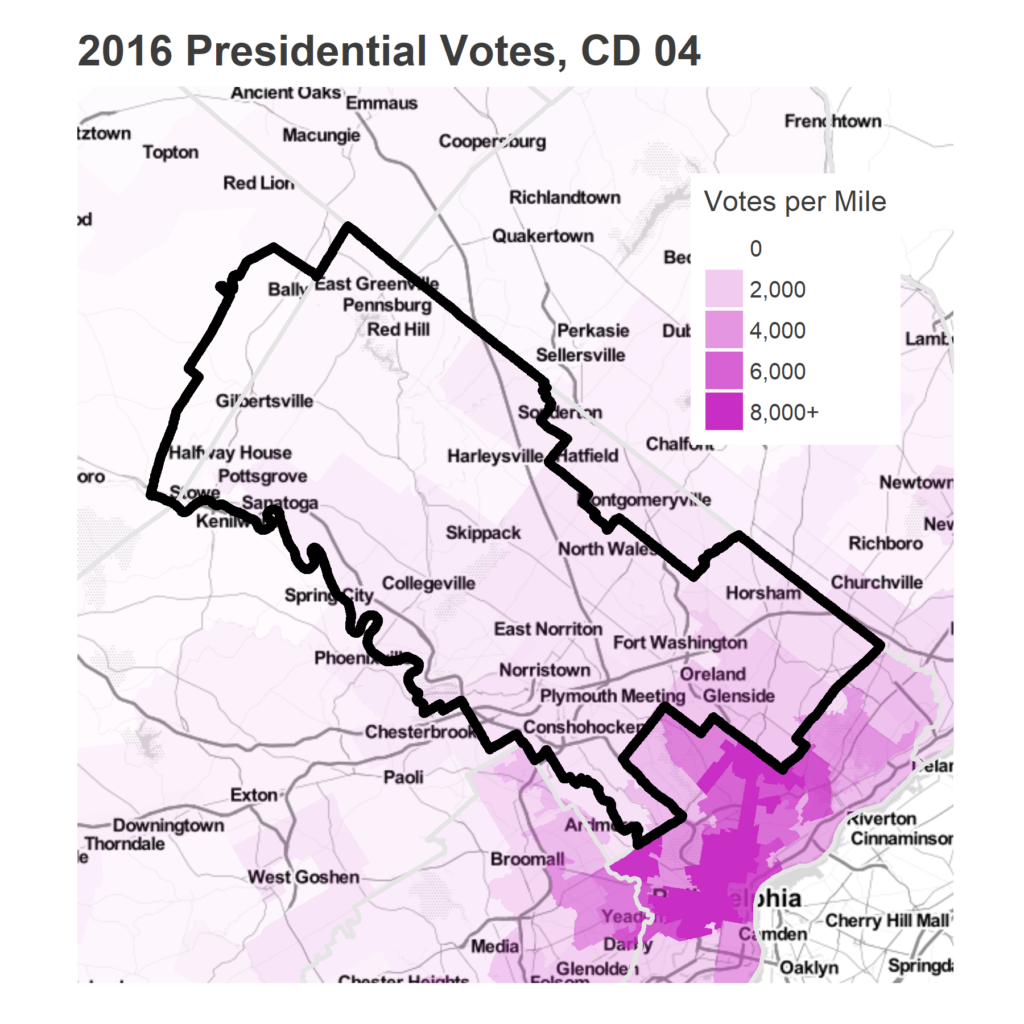
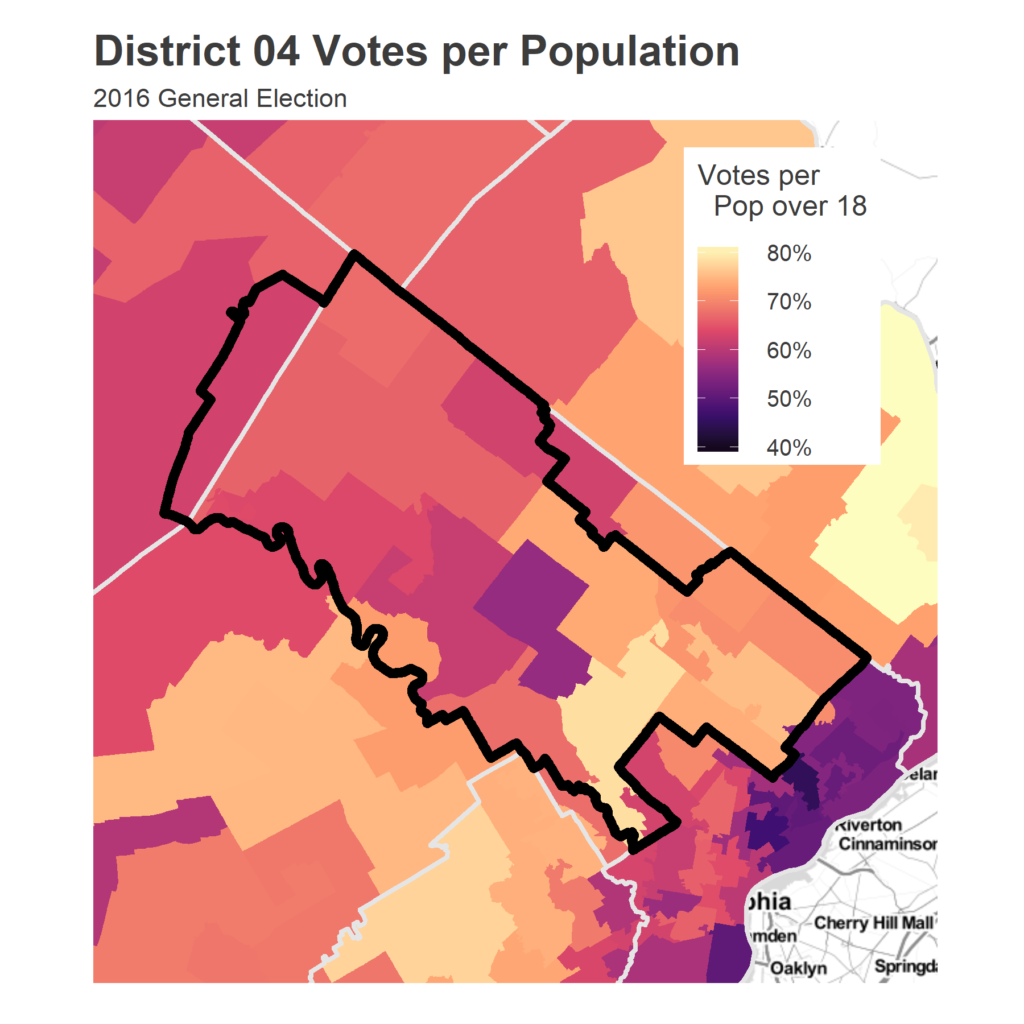
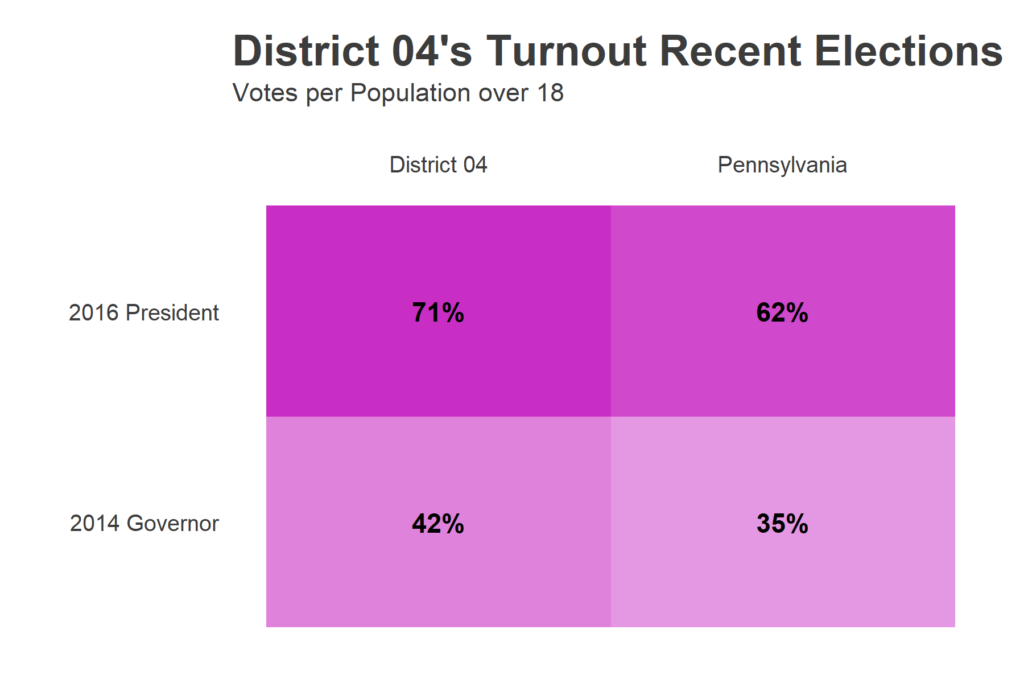
This November is a Gubernatorial election. The turnout falls, but proportionately less than in the rest of the state. It also falls less in the southeast, so those neighborhoods are *even more* important in elections for Governor.
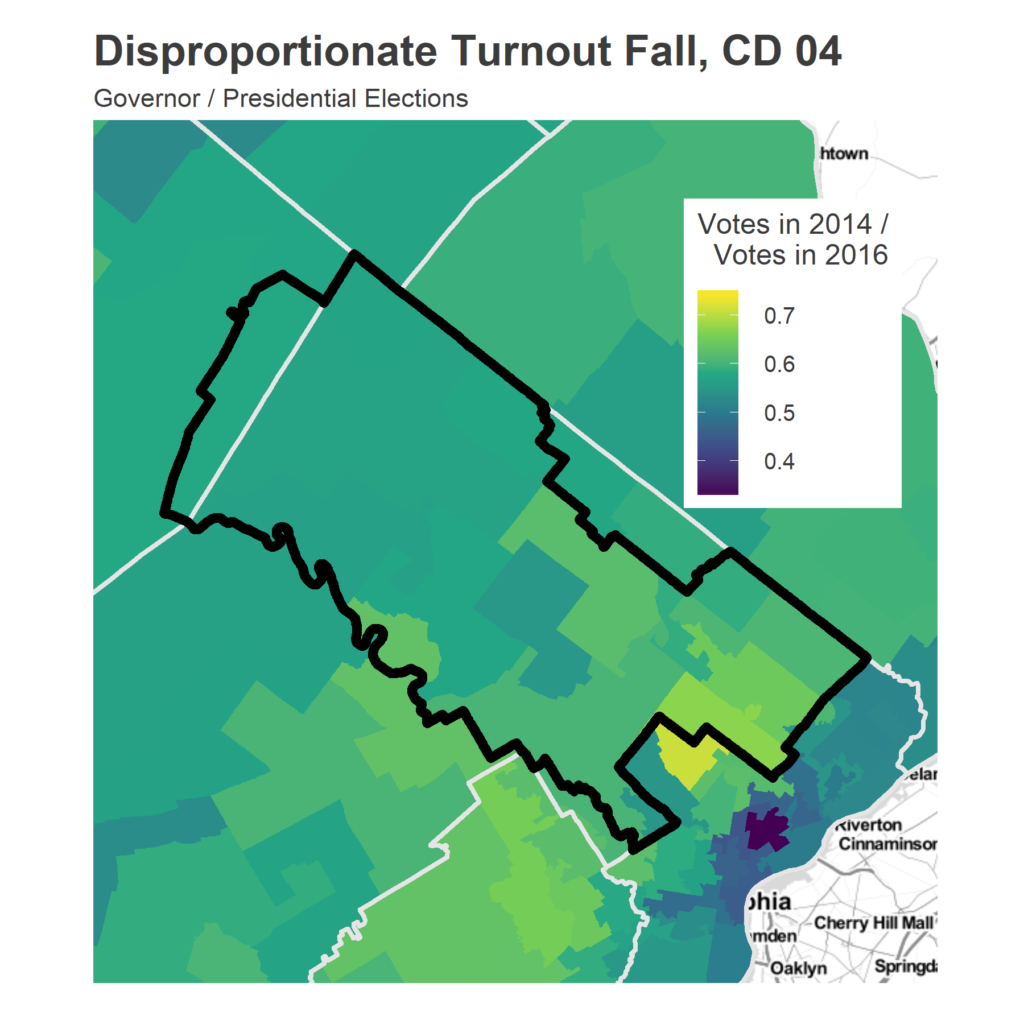
As I’ve pointed out in every one of these profiles, the Trump vote closely matches the Sanders vote. The district went 59-41 for Clinton over Sanders, a bigger Clinton win than the state overall. That was largely driven by the southeast.
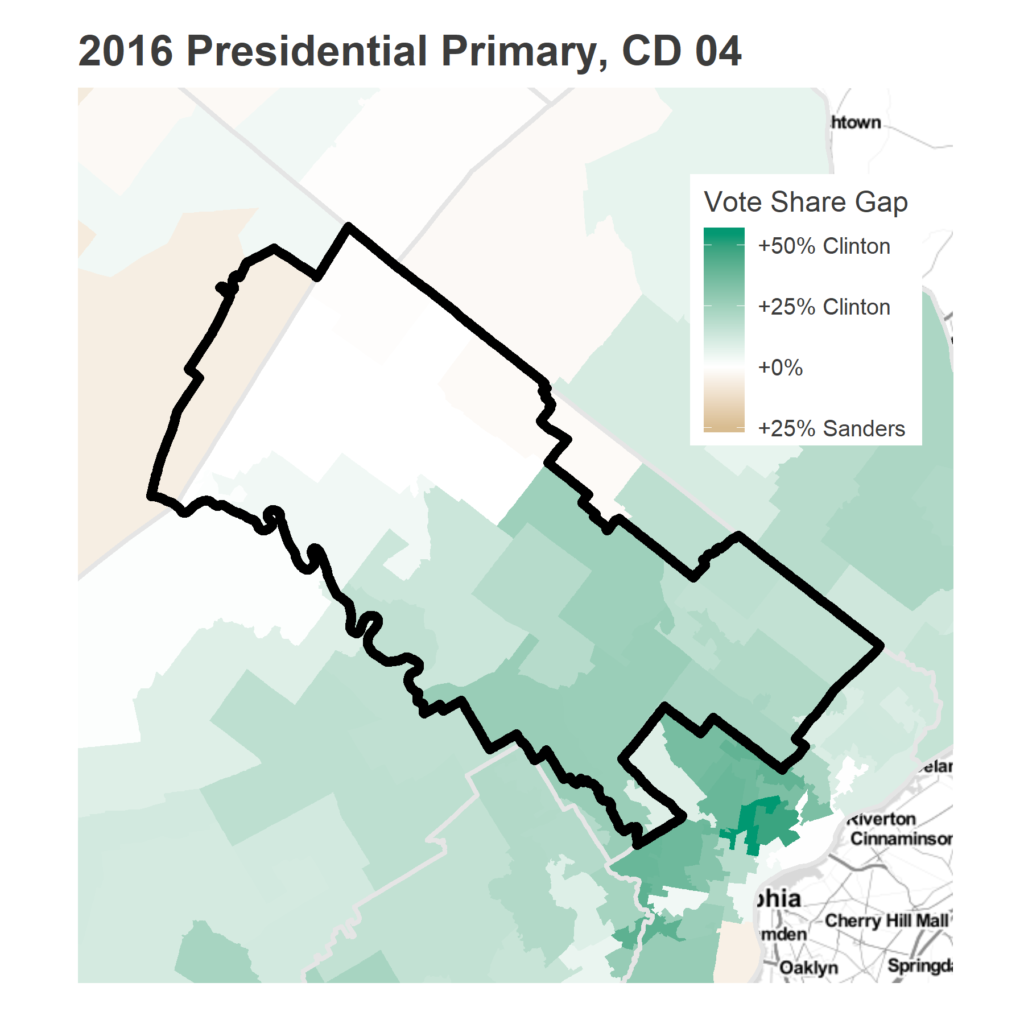
The racial cross-tabs are less interesting for this district than others, mostly because it’s so White. Perhaps most interesting is the stability of Hillary’s primary numbers across races; she doesn’t seem to have done quite so well in Black neighborhoods in the county as she did in Philadelphia.
